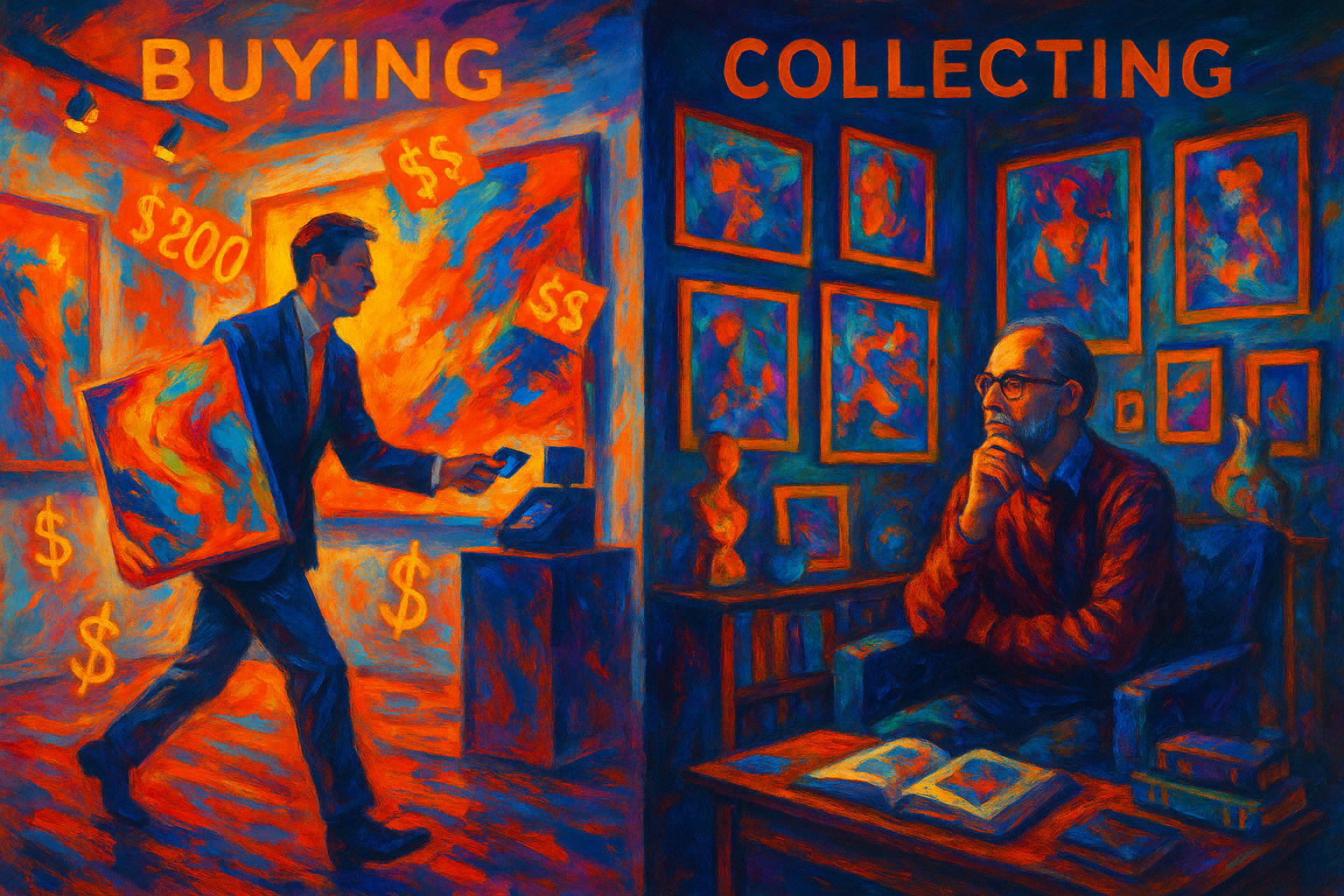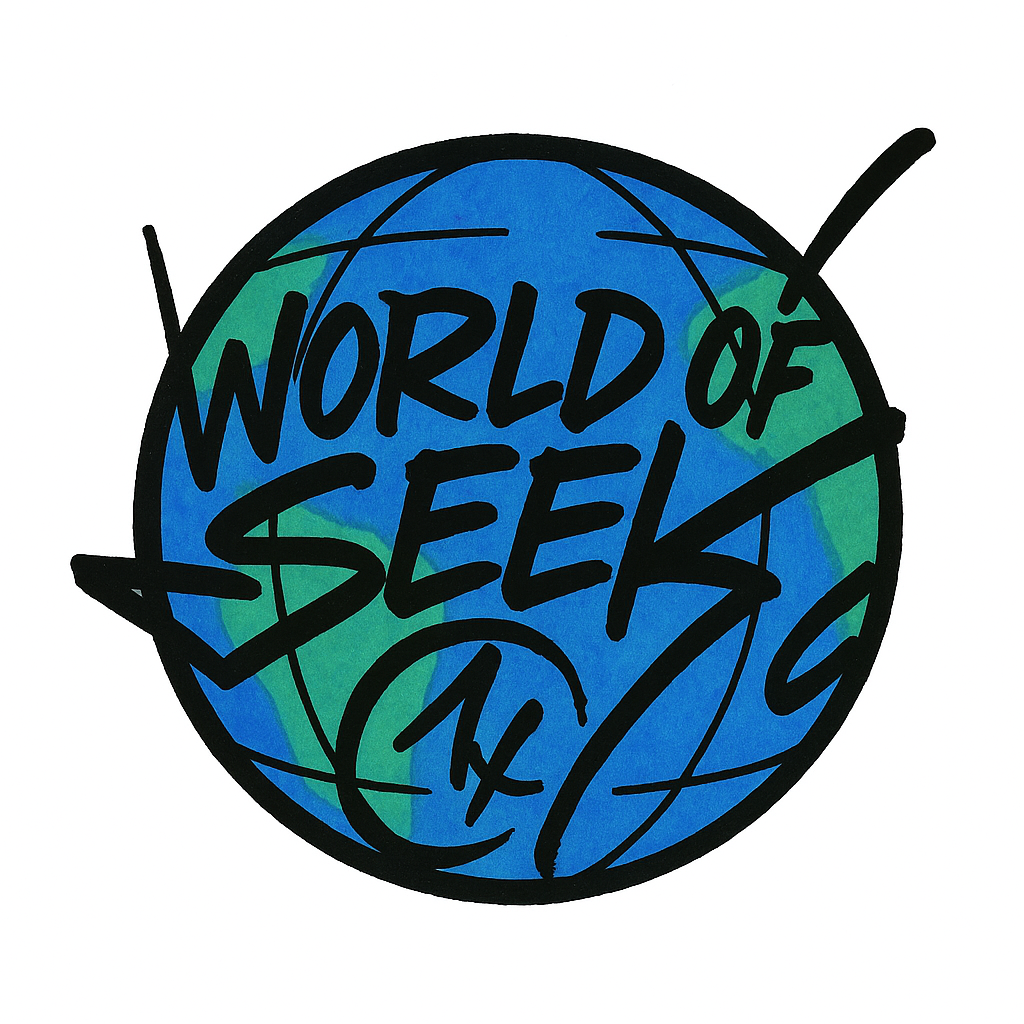People ask me all the time: “what’s the difference between buying art and collecting it?” Quick answer, buying is a moment; collecting is a plan.
When you buy, you see a piece, it hits you, you take it home. Nothing wrong with that, I do it too. Collecting is different. It’s connecting dots: who the artist is, where the piece sits in their story, how rare it is, how it’s documented, and whether it plays well with the rest of your wall. Buyers decorate. Collectors curate.

Image from Art Basel
How i think about it
Before I add anything to my own collection, I do a five-second gut check:
- Why this piece, right now? Is it a showstopper or just filling space?
- Where is the artist in their arc? Emerging, breakout show, or seasoned?
- How scarce is it? Edition size, APs/PPs, hand-finishing, these details matter.
- What’s the paper trail? Signature, COA, condition notes, framing specs. For banksy, if it’s not backed by Pest Control, I’m out.
- Can i care for it? Spray paint, wheatpaste, mixed media, treat them right (UV, humidity, proper framing) or pay for it later.
Read the room (aka the market)
The art market moves like the weather sunny in some places, stormy in others. Online sales keep growing, and that’s opened doors for newer collectors. Editions and works on paper are still the runway for street/urban art smart price points, and a lot of history starts there. If you like digging, the Art Basel & UBS report is a good pulse check, but don’t get stuck in charts. Your eye + basic homework beats hype.

Image from Art Basel
Learn from the big names (without copying their playbook)
- Banksy: Razor-sharp ideas plus tight authentication. again, Pest Control or pass.
- KAWS: From walls to global collabs. editions, sculpture, toys—the ecosystem is huge. start at the source: KAWSONE. focus on key releases, not every drop.
- Shepard Fairey (OBEY): Zines to museums. pay attention to edition details and condition; his archive at Obey Giant is a crash course.
How to build a collection that actually looks like you
- Pick a through-line: One city (Philly, Miami), one lane (post-graffiti abstraction, stencil minimalism), one medium (hand-finished screen prints), or one theme (text-based work). Focus beats FOMO every time.
- Make a short list: Six to eight targets: an early edition, a pivotal show piece, a collab print, a process artifact (study/test print), and one “stretch” work that scares you a little.
- Document everything: Invoices, edition notes, framing, install photos, and a one-liner on why you bought it. Future you or an appraiser will thank you.

Seek One on display at New River Fine Art in Ft. Lauderdale FL
How my works are collected
In my practice, everything starts with singular pieces, unique mixed-media works created one at a time. Each work is signed, dated, and accompanied by a COA, and we document provenance carefully (invoice, framing specs, studio notes, and install photos) so your piece carries its story wherever it goes.
You can acquire directly from my studio, through partner galleries I trust, or by commissioning a site-specific work:
Direct from the studio: We schedule a visit (virtual or in person), review available pieces, talk through scale, palette, and how the work will live in your space. I’ll share process shots and materials used so you understand the layers behind the surface.
Partner galleries: When a gallery places my work, they handle viewing, shipping, and aftercare with the same standards I keep in the studio. If you purchase through them, I still log the provenance in my records so the chain is clean and complete.
Commissions: We start with a brief, references, space photos, and how you want the piece to feel from across the room and up close. I create sketches or mockups, refine with you, and finalize a materials plan built to age well (UV-stable paints, archival grounds, conservation-grade varnish where appropriate). Milestones are clear: concept approval, in-progress check-ins, and a final studio review before delivery and installation.
Collectors who work with me often join a private registry so I can share early looks at new bodies of work and context for upcoming shows—why a series matters, where it’s headed, and how a specific piece fits into the larger narrative. Studio visits are collaborative: We map your wall together, balancing sightlines, lighting, and color temperature so the work anchors the room and speaks to what you already own.

Seek One on display at the Hamptons Fine Art Fair 2025
The real payoff
Collecting doesn’t kill spontaneity; it multiplies it. The fun shifts from a single score to watching your wall tell a story, how an artist you spotted at a mural festival evolves into a gallery show, then a museum. You’re not just hanging images; you’re building a timeline.
Bottom line: If a piece grabs you, buy it. If it still grabs you after these checks and it fits your bigger picture, collect it.


